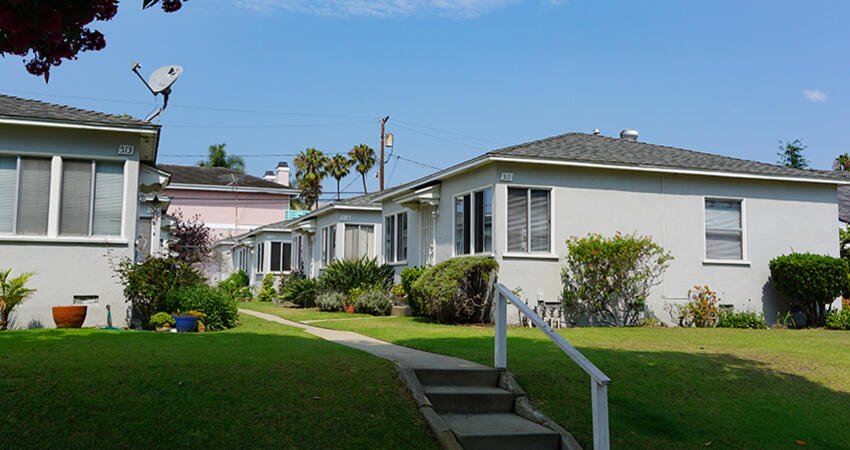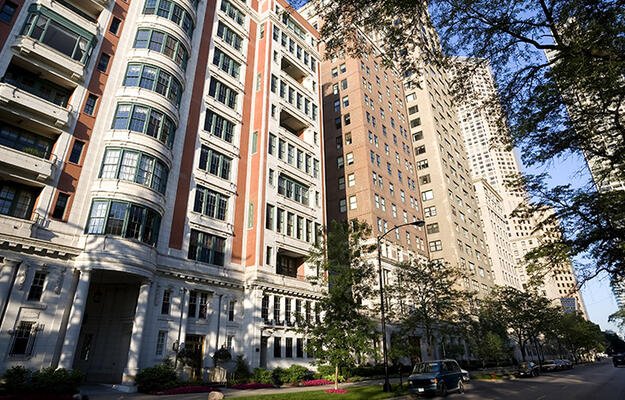
Are Subsidized Housing Residents More Vulnerable and More Exposed to Extreme Heat?
- Title:
-
Extreme Heat Vulnerability of Subsidized Housing Residents in California
- Author:
-
C.J. Gabbe and Gregory Pierce
- Source:
- Publication Date:
-
2020
Many subsidized housing residents are seniors, people with preexisting health conditions, people of color, and people with lower and fixed incomes. These populations are vulnerable to extreme heat and heat waves, which are increasing as climate change intensifies. This study, which explored whether Californians living in subsidized housing are more vulnerable to extreme heat and more exposed to extreme heat than those in unsubsidized housing, is the first to focus on this specific variation in extreme heat exposure and vulnerability.
This study focused on residents of unsubsidized housing and participants in three major federal subsidized housing programs—the Section 8 Housing Choice Voucher Program, public housing, and the Low-Income Housing Tax Credit (LIHTC)—as well as residents in California’s Affordable Housing and Sustainable Communities program, which encourages subsidized housing developers to incorporate green features, reduce impervious surfaces (like pavement) that collect solar heat, improve energy efficiency and reduce energy costs, and incorporate cooling centers.
The authors created a census tract–level dataset of housing characteristics, daily temperature projections, adaptive capacity (access to resources to mitigate extreme heat impacts), and heat sensitivity factors. They identified extreme heat using climate projections and isolated “high-heat tracts,” which they defined as the top quartile of census tracts that, in the 2040s, are projected to have the most days with temperatures greater than the 98th percentile of historical heat averages. Gabbe and Pierce developed a neighborhood-level adaptive capacity and sensitivity index (ACSI) of 19 variables including median household income, presence of central air conditioning, poverty rate, number of people younger than 18 and older than 65, and racial and ethnic groups. The ACSI index measures overall tract vulnerability through factors that indicate both how sensitive a tract’s population is to heat and the presence of barriers to climate adaptation. “High-ACSI tracts” are those in the top quartile of tracts for both adaptive capacity and heat sensitivity, indicating greater risk factors for heat exposure and challenges. Census tracts with the highest proportions of all factors—heat-vulnerable residents, barriers to climate adaptation, and exposure to high-heat days—are isolated as particularly important as these tracts are home to residents who are both more vulnerable and more exposed to extreme heat, necessitating targeted attention.
Key findings
- A disproportionate share of Californians with low incomes living in subsidized housing reside in neighborhoods that are hotter, have more heat-sensitive populations, and have higher barriers to climate adaptation. These units are predominately located in neighborhoods with fewer trees and more impervious surfaces, two major built-environment factors that impact extreme heat exposure.
- Public housing and LIHTC units are particularly likely to be located in tracts that are both high-heat and high-ACSI. This means not only are residents of these units more likely to be heat-sensitive, but they are also more likely to be exposed to extreme heat.
- Extreme heat risk is not evenly distributed across the state, and clusters in certain cities and counties. Notably, Fresno County contains more than 20 percent of California’s subsidized housing that is located in high-heat, high-ACSI tracts. These units also comprise 71 percent of Fresno’s total subsidized housing stock.
Policy implications
- Local governments can prioritize urban forestry initiatives in places with sizable low-income populations to expand the tree canopy.
- Cities can reduce impervious surfaces by limiting parking space and encouraging reflective roofs and paving, green roofs, and permeable paving.
- State and federal programs can retrofit existing housing and mitigate extreme heat in new subsidized developments.
- Fourteen percent of California’s LIHTC units are in high-heat and high-ACSI tracts, and the LIHTC is the largest supply-side subsidized housing program in the country, meaning policymakers have a unique opportunity to make LIHTC units more resilient to high temperatures through climate-adaptive measures.
- Broadly, heat vulnerable populations who live in subsidized housing are more exposed to extreme heat, and need targeted climate adaptative interventions. The authors suggest one way to ensure climate adaptation benefits these populations is by incorporating climate adaptation into policies and programs that serve seniors, children, people with lower incomes, people of color, and people living with chronic illness. California’s Affordable Housing and Sustainable Communities program could serve as a model for large state and federal housing subsidy programs.
Photo by Underawesternsky/Shutterstock


